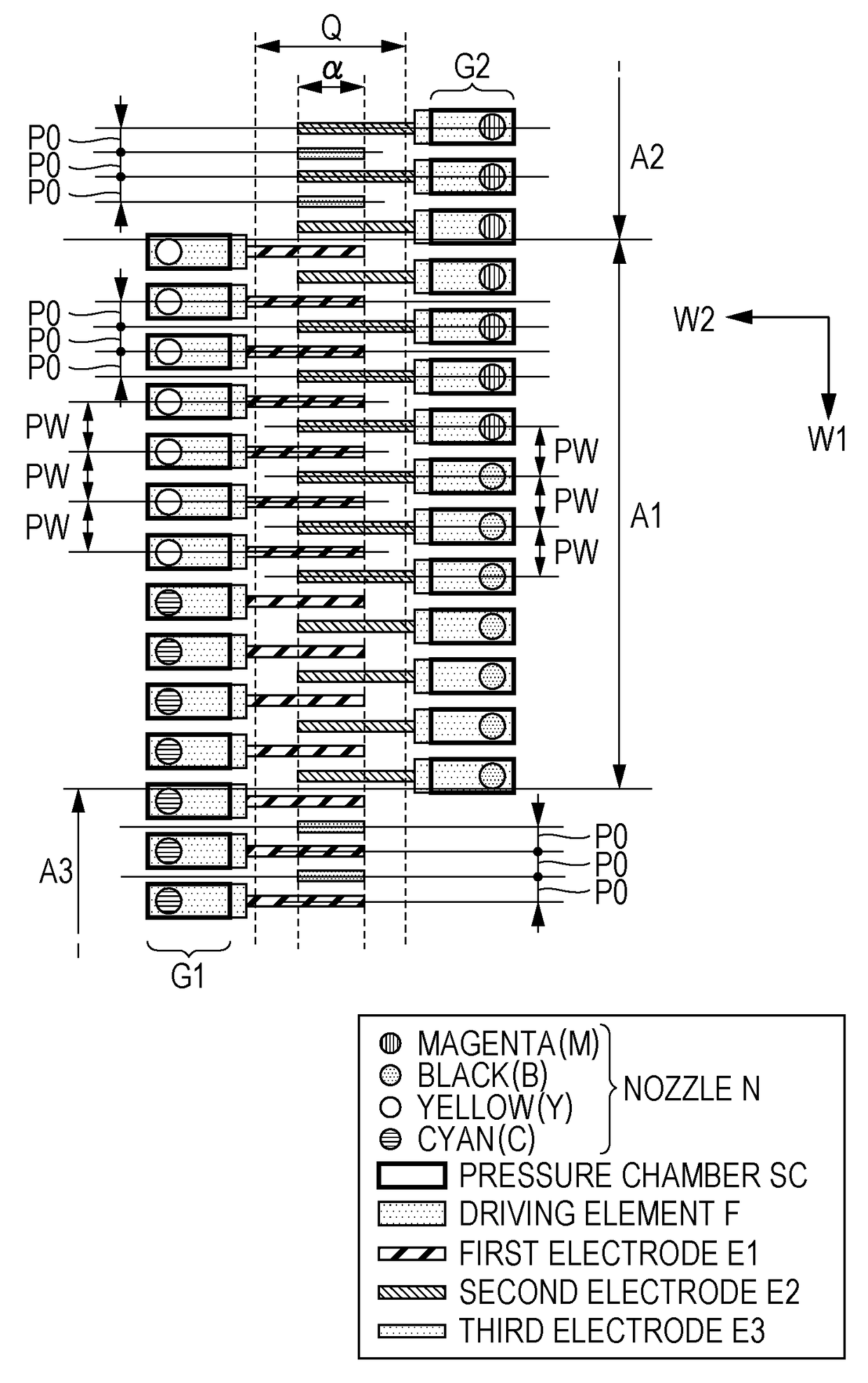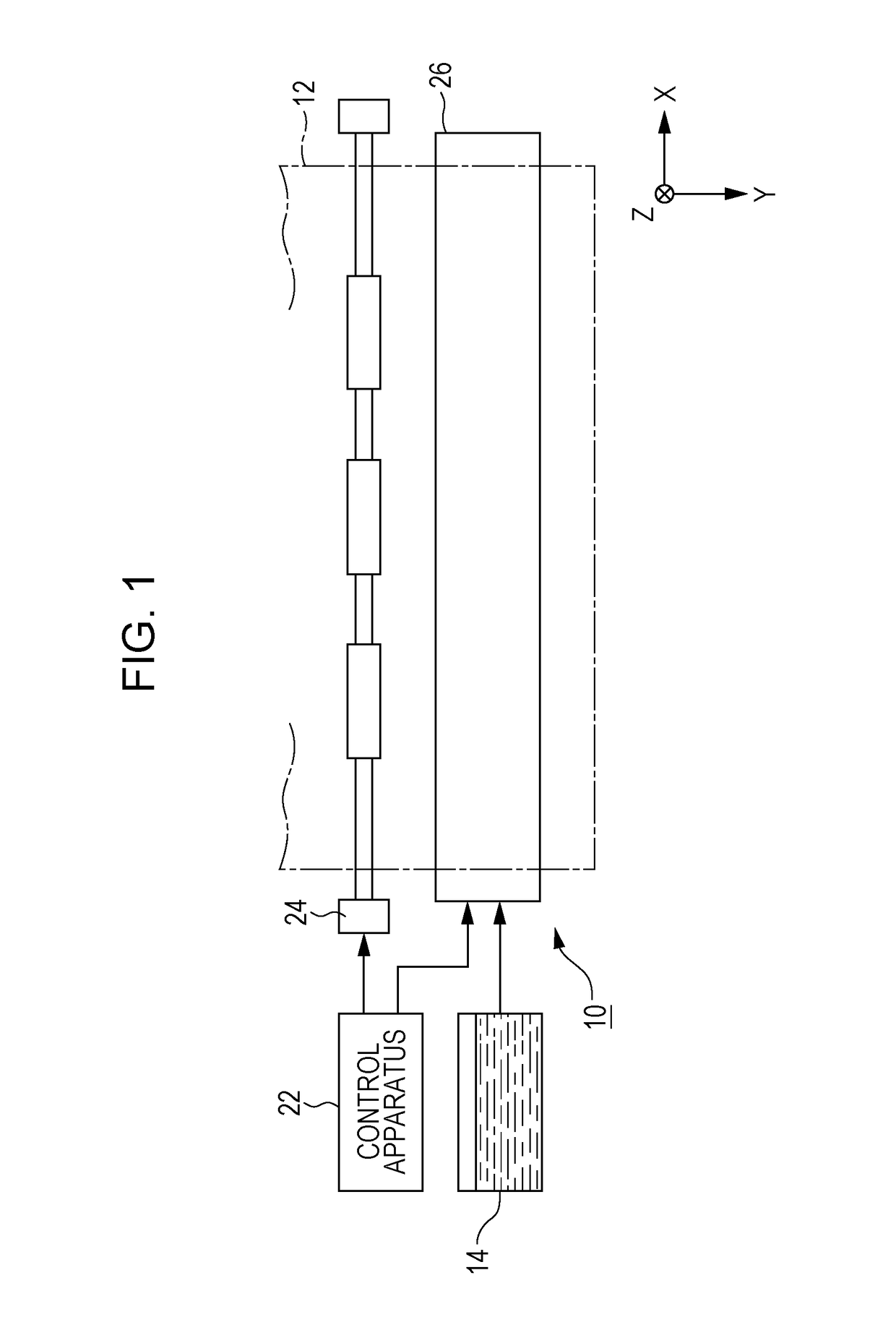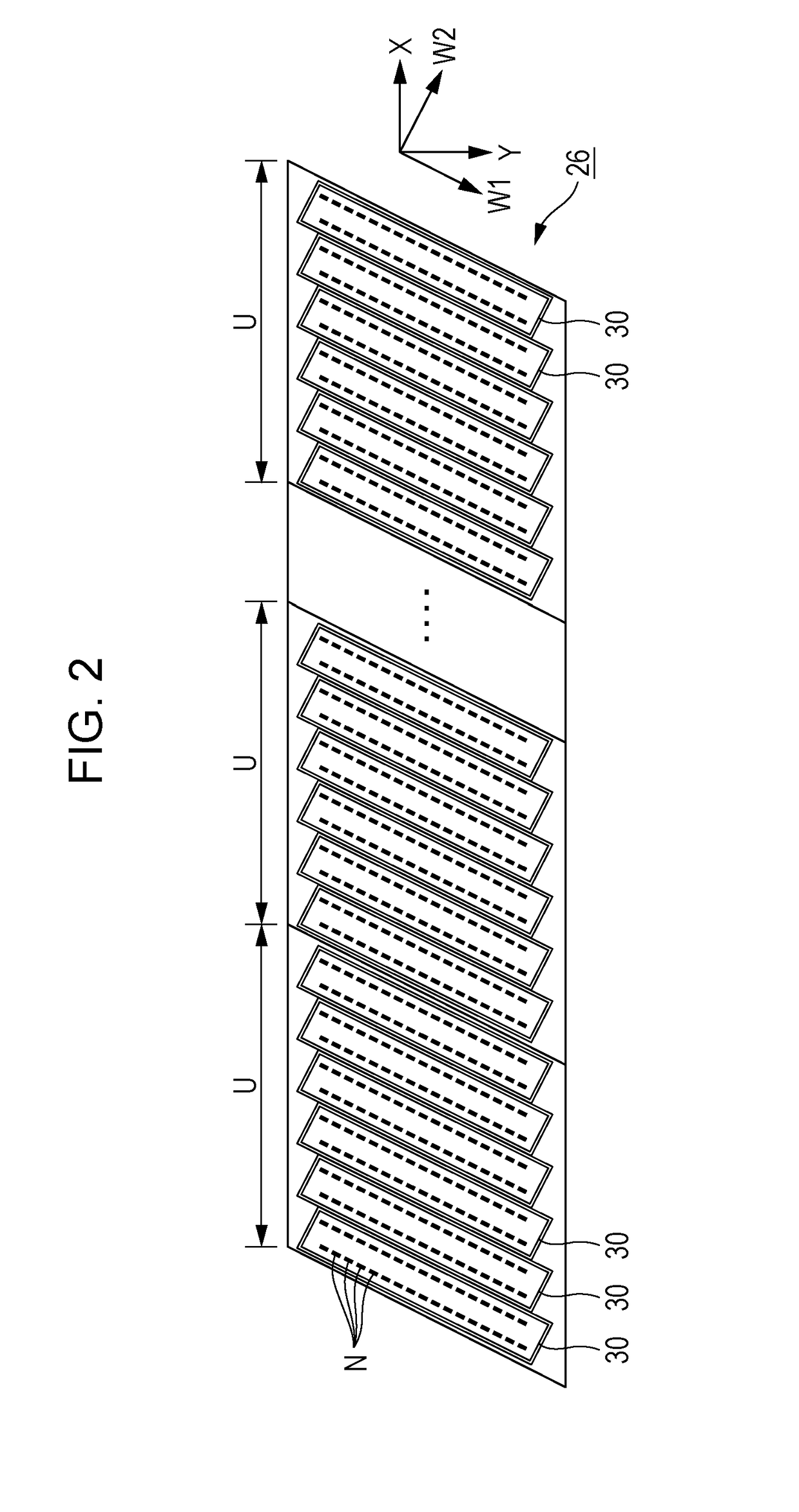Liquid ejecting head and liquid ejecting apparatus
a liquid ejecting head and liquid ejecting technology, applied in the direction of printing, inking apparatus, etc., can solve the problems of insufficient adhesive strength or positional error of the wiring board, non-uniform characteristics, and failure to adhere or the lik
- Summary
- Abstract
- Description
- Claims
- Application Information
AI Technical Summary
Benefits of technology
Problems solved by technology
Method used
Image
Examples
first embodiment
[0030]FIG. 1 is a partial configuration diagram of an ink jet type printing apparatus 10 according to a first embodiment of the invention. The printing apparatus 10 of the first embodiment is a liquid ejecting apparatus which ejects ink, which is an exemplification of a liquid, onto a medium 12 (ejection target) such as printing paper and includes a control device 22, a transport mechanism 24, and a liquid ejecting module 26. A liquid container (cartridge) 14 which retains ink of a plurality of colors is mounted in the printing apparatus 10. In the first embodiment, ink of four colors: cyan (C); magenta (M); yellow (Y); and black (B) is retained in the liquid container 14.
[0031]The control device 22 collectively controls each of the components of the printing apparatus 10. The transport mechanism 24 transports the medium 12 in the Y direction under control by the control device 22. The liquid ejecting module 26 ejects ink supplied from the liquid container 14 onto the medium 12 unde...
second embodiment
[0060]The second embodiment of the invention will be described below. Here, in each of the aspects exemplified below, concerning components which have the same actions and functions as the first embodiment, detailed explanation will be omitted as appropriate by using the same reference numerals which are explained in the first embodiment.
[0061]FIG. 8 is a schematic diagram of each component viewed from the negative side in the Z direction of the liquid ejecting head 30 according to a second embodiment. As exemplified in FIG. 8, the liquid ejecting head 30 of the second embodiment includes a plurality of dummy elements FD which are not actually utilized in ejection of ink. In detail, as exemplified in FIG. 8, the plurality of dummy elements FD are formed between the plurality of driving elements F which correspond to yellow and the plurality of driving elements F which correspond to cyan out of the first nozzle row G1 (that is, between colors of the first nozzle row N1) and the plura...
third embodiment
[0068]FIG. 9 is a schematic diagram of each component viewed from the negative side in the Z direction of the liquid ejecting head 30 according to a third embodiment. As exemplified in FIG. 9, in the third embodiment, a plurality of pressure chambers SD are formed at the positive side and the negative side in the W1 direction viewed from the pressure chambers SC which correspond to each of the driving elements F of the first element group G1. In the same manner, a plurality of the pressure chambers SD are formed at the positive side and the negative side in the W1 direction viewed from the pressure chambers SC which correspond to each of the driving elements F of the second element group G2. In the same manner to the second embodiment, each pressure chamber SD is formed with a structure in the same manner as the pressure chamber SC and is a pseudo-space which is not actually utilized in ejection of ink.
[0069]In the configuration where the pressure chambers SD are not formed at both ...
PUM
 Login to View More
Login to View More Abstract
Description
Claims
Application Information
 Login to View More
Login to View More - R&D
- Intellectual Property
- Life Sciences
- Materials
- Tech Scout
- Unparalleled Data Quality
- Higher Quality Content
- 60% Fewer Hallucinations
Browse by: Latest US Patents, China's latest patents, Technical Efficacy Thesaurus, Application Domain, Technology Topic, Popular Technical Reports.
© 2025 PatSnap. All rights reserved.Legal|Privacy policy|Modern Slavery Act Transparency Statement|Sitemap|About US| Contact US: help@patsnap.com



